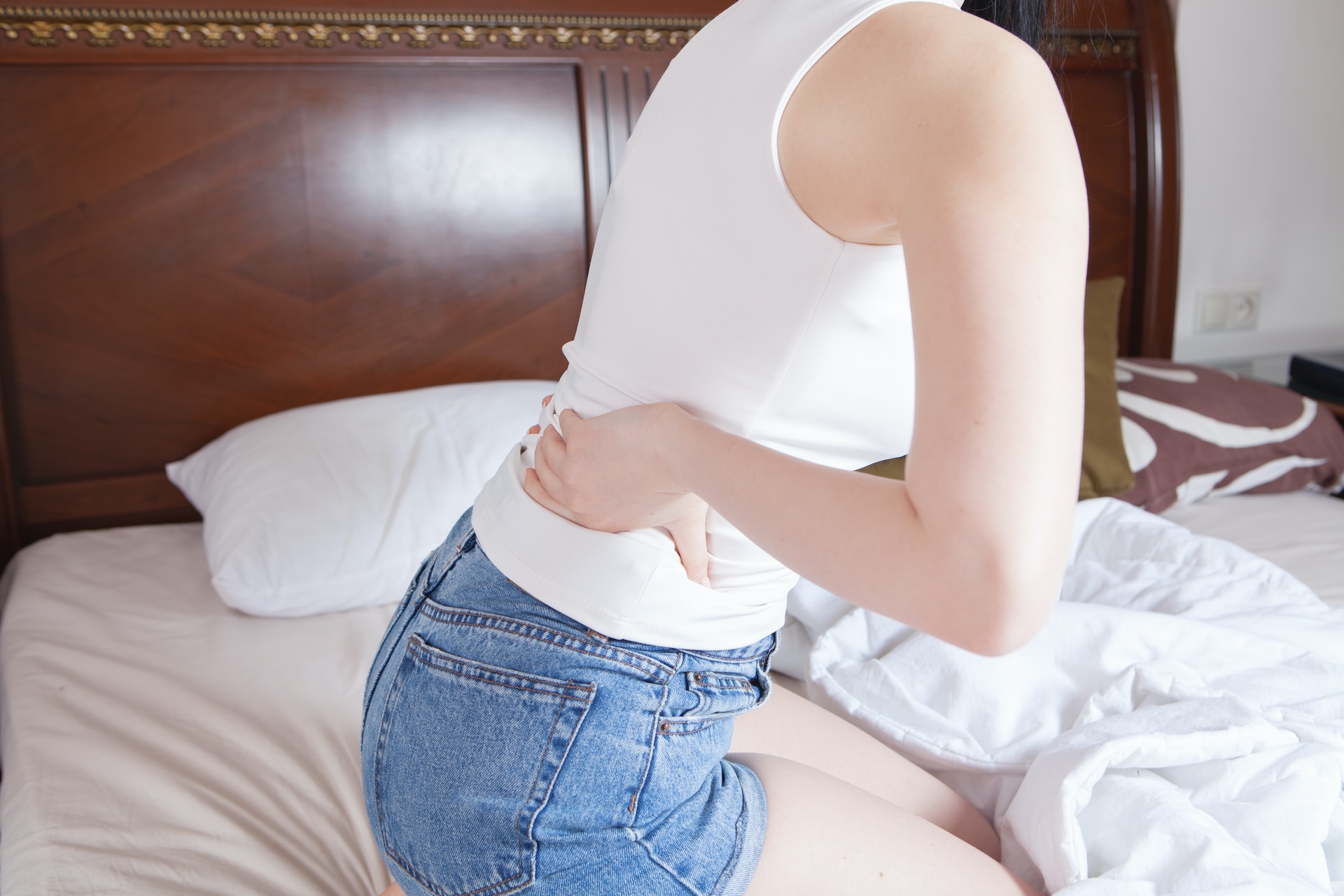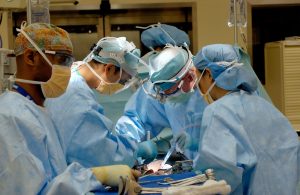
“Why does my side hurt?” It’s a question that many of us have asked at some point in our lives. Side pain is a common and often perplexing symptom that can manifest in various forms, causing discomfort or even severe distress.
In this comprehensive guide, we delve into the intricate mechanisms and factors behind pain on the side, shedding light on the various conditions and situations that can lead to this discomfort. Whether you’ve experienced side pain during exercise, after eating, or during urination, understanding its underlying causes is crucial for effective management and treatment. Join us as we explore the multifaceted world of side pain and provide valuable insights into its origins, symptoms, and solutions.
Key Takeaways
- Muscle Strain and Side Stitches: Muscle strain in the side, known as a “side stitch,” can occur during physical activity due to poor warm-up or shallow breathing.
- Respiratory Movements and Pleurisy: Pleurisy, an inflammation of the pleura, can lead to sharp chest or side pain, often triggered by infections or chest trauma.
- Coughing and Sneezing-related Pain: Straining intercostal muscles during coughing or sneezing can cause side pain, especially when there are undiagnosed rib injuries.
- Running and Exercise-Related Pain: Exercise-related transient abdominal pain (ETAP) can result from the jostling of abdominal organs and diaphragmatic irritation during physical activity.
- Digestive Issues and Post-Meal Pain: Digestive problems like gastritis or gallbladder issues can lead to abdominal discomfort after eating.
- Pain During Urination: Urinary tract infections (UTIs) and kidney stones can cause side pain during urination.
Why Does My Side Hurt?
A variety of factors can cause side pain, and the specific cause can vary depending on the location and nature of the pain. Some common causes of side pain include:
- Muscle strain: Overexertion or sudden movements can strain the muscles in your side, leading to pain.
- Gas or bloating: Sometimes, trapped gas in the digestive system can cause discomfort or sharp pains in the side.
- Kidney stones: Kidney stones can cause severe pain in the side or back, often accompanied by other symptoms like nausea and blood in the urine.
- Digestive issues: Conditions like gastritis, acid reflux, or irritable bowel syndrome (IBS) can lead to abdominal pain that may be felt on the side.
- Rib injuries: Injuries to the ribs, such as fractures or bruising, can result in side pain.
- Overuse or injury: Repetitive movements or trauma to the side can lead to muscle or joint pain.
- Infections: Certain infections, such as appendicitis, can cause pain in the lower right side of the abdomen.
- Organ problems: Issues with organs in the abdominal area, like the liver, spleen, or gallbladder, can lead to side pain.
What Can Cause Pain on the Side?
Side pain is a common symptom with various causes. Pain in the side, especially when severe, can be attributed to various underlying causes, each with its unique mechanisms and factors. Understanding these mechanisms and factors behind side pain is crucial.
1. Pain due to Muscle Strain and Side Stitches
- Mechanism of Pain: Muscle strain in the side, also known as a “side stitch,” occurs when the diaphragm muscle (the primary muscle for breathing) cramps or spasms. This can happen during strenuous physical activity, such as running, and is often due to inadequate warm-up, poor posture, or rapid, shallow breathing.
- Diaphragmatic Irritation: The pain is a result of the diaphragm pulling on the ligaments that attach it to the internal organs, particularly the liver, which can cause irritation and discomfort.
- Prevention: Proper breathing techniques, such as deep and rhythmic breathing, and maintaining good posture during exercise can help prevent or reduce side stitches.
2. Pain Associated with Respiratory Movements and Breathing
- Pleurisy: Pleurisy is an inflammation of the pleura, which consists of two layers that surround the lungs. When these layers become inflamed, they rub against each other during breathing, causing sharp and localized pain in the chest or side.
- Causes: Pleurisy can be triggered by infections (such as pneumonia), autoimmune diseases (like lupus), or trauma to the chest. It often requires treatment of the underlying cause.
Also Read: Living with Long-Term Chest Pain from Anxiety: Guide from Symptoms to Treatment Plan
3. Coughing and Sneezing-related Pain
- Intercostal Muscle Strain: Coughing or sneezing can strain the intercostal muscles, which are located between the ribs. This strain can cause pain on the side.
- Rib Injuries: If you have an undiagnosed rib injury, the stress of coughing or sneezing can exacerbate the pain. Rib fractures, bruising, or cartilage injuries can lead to this discomfort.
- Treatment: Rest and proper support for the ribs are often needed to heal these injuries.
4. Pain During Running and Physical Activity
- ETAP or Side Stitch: Exercise-related transient abdominal pain (ETAP) is a common phenomenon during physical activity. The exact cause is still debated, but it is often attributed to the jostling of abdominal organs, changes in blood flow, and irritation of the diaphragm during exercise.
- Breathing and Movement: Rapid or shallow breathing while running can lead to more frequent side stitches. Engaging in deep and rhythmic breathing patterns and warming up properly can help reduce the risk of side stitches.
5. Digestive Issues and Post-Meal Pain
- Digestive Issues: Abdominal discomfort after eating can be caused by various digestive problems, including gastritis (inflammation of the stomach lining) and indigestion.
- Gallbladder Issues: Pain on the right side after eating can sometimes be related to gallbladder problems. The gallbladder releases bile to aid in digestion, and issues like gallstones can cause pain after consuming fatty foods.
- Differential Diagnosis: Determining the exact cause may require medical evaluation, including imaging tests and blood work.
6. Pain During Urination and Peeing
- UTIs: Urinary tract infections are a common cause of side pain when urinating. Infections in the bladder (cystitis) or the urethra can lead to pain, discomfort, and a frequent urge to urinate.
- Kidney Stones: Kidney stones are solid masses that form in the kidneys. When they move through the urinary tract, they can cause excruciating pain, often felt in the side or lower back, and may be accompanied by blood in the urine.
- Treatment: UTIs are typically treated with antibiotics, while kidney stones may require medical intervention, depending on their size and location.
Best Practices for Managing Side Pain
- Proper Breathing and Posture: Maintain deep and rhythmic breathing and good posture during physical activity to prevent or alleviate side stitches.
- Address Underlying Causes: Seek medical attention to determine and treat the underlying causes of side pain, especially in cases of persistent or severe discomfort.
- Rest and Support: For pain resulting from coughing or sneezing, ensure rest and provide proper support for any rib injuries.
- Warm-Up: Adequate warm-up before physical activity can help reduce the risk of exercise-related transient abdominal pain (ETAP).
- Balanced Diet and Medical Evaluation: Maintain a balanced diet and seek medical evaluation for persistent post-meal pain, as it may indicate underlying digestive issues or gallbladder problems.
- Antibiotics and Medical Intervention: UTIs are typically treated with antibiotics, while kidney stones may require medical intervention based on their size and location.
Final Thoughts
These insights should provide a comprehensive understanding of the potential causes of side pain in various situations and help your readers grasp the underlying mechanisms and factors involved. It’s important to note that side pain can be a symptom of various underlying conditions.
If the pain is persistent, severe, or accompanied by other concerning symptoms like blood in urine, nausea, or fever, it is crucial to seek medical attention. A healthcare professional can perform a thorough evaluation and recommend appropriate diagnostic tests to determine the exact cause of your side pain and develop an effective treatment plan.
Also Read: Unraveling Pain Under Right Rib Cage: A Complete Guide to Causes, Care, and Concern
FAQs for Managing Pain on the Side
- Q: What causes side stitches during exercise?
- A: Side stitches are often caused by diaphragmatic cramps during strenuous physical activity, resulting from inadequate warm-up, poor posture, or rapid, shallow breathing.
- Q: How is pleurisy related to side pain?
- A: Pleurisy, an inflammation of the pleura surrounding the lungs, can cause sharp chest or side pain, primarily when the inflamed pleural layers rub against each other during breathing.
- Q: What should I do if I experience side pain after coughing or sneezing?
- A: Rest and provide proper support for any rib injuries, and consult a healthcare professional if the pain persists.
- Q: Can side pain during running be prevented?
- A: Deep and rhythmic breathing patterns, along with proper warm-up, can help reduce the risk of side stitches during physical activity.
- Q: Why do I experience side pain after eating?
- A: Abdominal discomfort after eating may result from various digestive issues, such as gastritis or gallbladder problems. Consult a doctor for a precise diagnosis.
- Q: What is the treatment for urinary tract infections (UTIs) causing side pain?
- A: UTIs are typically treated with antibiotics prescribed by a healthcare professional.
- Q: How are kidney stones related to side pain?
- A: Kidney stones, solid masses that form in the kidneys, can cause severe side or lower back pain when they move through the urinary tract. Medical intervention may be necessary depending on their size and location.
#SidePain #PainManagement #UnderstandingPain #MuscleStrain #RespiratoryIssues #DigestiveProblems #KidneyStones #RibInjuries #ExercisePain #Gastritis #UTI #Pleurisy #Wellness #HealthTips #PainPrevention
Note: The information provided in this article is for educational purposes only and should not be taken as medical advice. For personalized health recommendations, it is always advisable to consult with a healthcare professional before incorporating any changes to your daily health routine.







No comment yet, add your voice below!